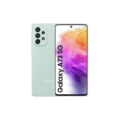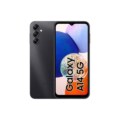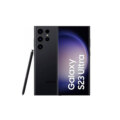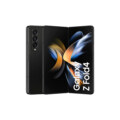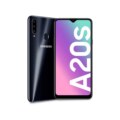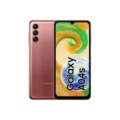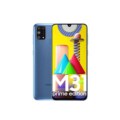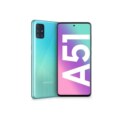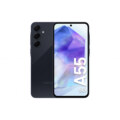Samsung Galaxy A34
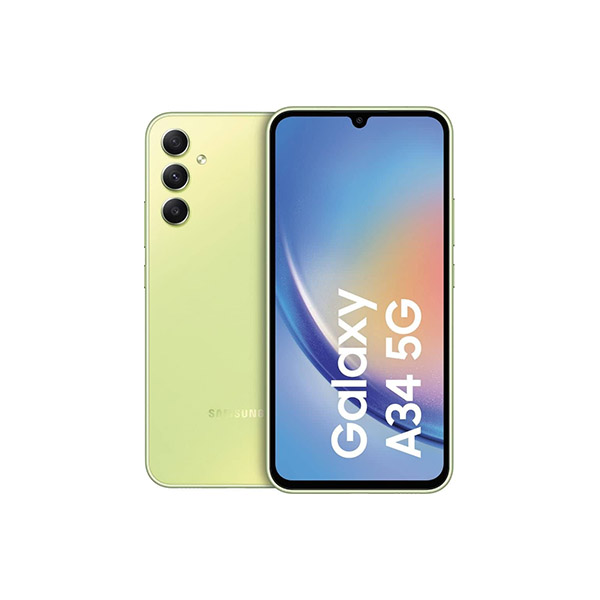

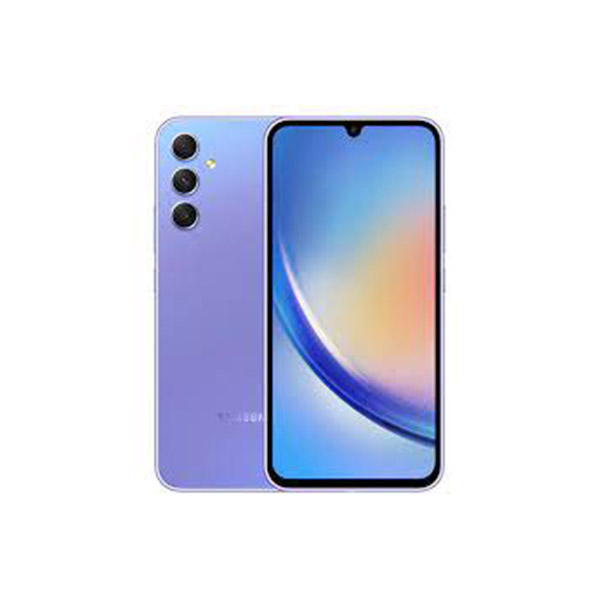
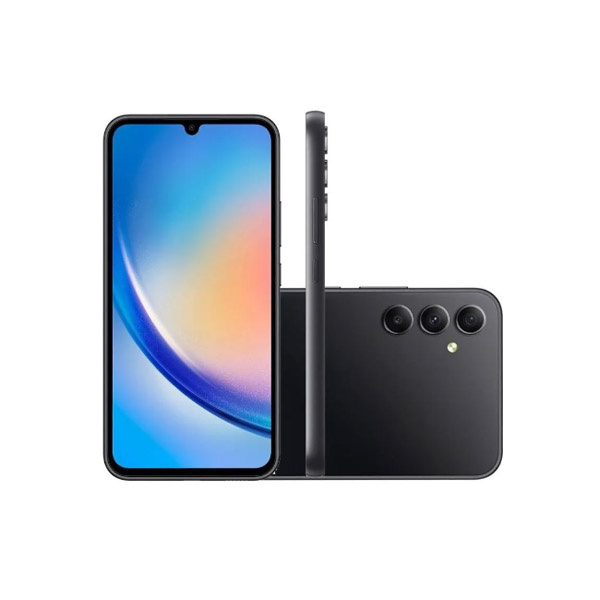
Specs
General
| Device Type | Smart Phone |
| Model | SM-A346E, SM-A346B, SM-A346B/DS, SM-A346B/DSN, SM-A346E/DS, SM-A346E/DSN, SM-A346M, SM-A346M/N, SM-A346M/DSN, SM-A3460 |
| Announced | 13 March, 2023 |
| Released | 24 March, 2023 |
| Status | Available |
Design
| Water Resistant | IP67 dust/water resistant (up to 1m for 30 min) |
| Dimensions | 161.3 x 78.1 x 8.2 mm |
| Weight | 199 g |
| Protection |
Glass front (Gorilla Glass 5) plastic frame plastic back |
| Colors |
Lime Graphite Violet Silver |
Display
| Refresh Rate | 120 Hz |
| Display Type Display Technology => A number of display technologies and types used in mobile phones => TFT (Thin Film Transistor), IPS (In-Place Switching), OLED (Organic Light Emitting Diode), AMOLED (Active-Matrix Organic Light-Emitting Diode), Super AMOLED (an even advanced version of AMOLED), Resistive Touchscreen (Resistive touchscreens contain two layer of conductive material with a very small gap between them which acts as a resistance), Capacitive Touchsceen (Capacitive touchscreen technology consists of a layer of glass coated with a transparent conductor) | Super AMOLED |
| Size | 6.6 inches (16.76 cm) |
| Resolution | 1080x2340 px (FHD+) |
| Display Colors Display Colors is refers to the number of different shades of colors that the screen is capable of displaying => 64K colors, 256K colors and 16 million colors, Obviously 16M is highest available range of colors and better than others. | 16M colors, Always-on display |
| Pixel Density Pixel Density (PPI) is refers to the concentration of pixels on a particular display, measured in pixels per inch (ppi). Pixel density is calculated by dividing the diagonal pixel resolution of a display by its diagonal size, higher pixel density better display quality. | 390 ppi |
| Touch Screen | Yes, Capacitive Touchscreen, Multi-touch |
| Display Protection Display Protection => Gorilla Glass is a special alkali-aluminosilicate glass shield with exceptional damage resistance that helps protect mobile displays from scratches, drops, and bumps of everyday use, It is always better to go for a smartphone with Gorilla Glass for that added protection and peace of mind. | Corning Gorilla Glass v5 |
| Features | 1000 nits (HBM) |
Camera
| Front Camera | 13 MP, f/2.2, (wide), 1/3.1", 1.12µm |
| Camera Setup | Triple |
| Main Camera Camera is able to capture photographs and usually videos, The most important characteristics of a camera are the resolution (measured in megapixels), lens focus type (fixed or automatic), higher megapixel cameras are known to capture higher quality photos, but not always a good measurement of the photos quality. |
48 MP, f/1.8, 26mm (wide), 1/2.0", PDAF, OIS 8 MP, f/2.2, (ultrawide), 1/4.0" 5 MP, f/2.4, (macro), LED Flash |
| Image | 8000 x 6000 Pixels |
| Video | 4K@30fps, 1080p@30/60fps, 720p@480fps |
| Camera Features | Geo-tagging, touch focus, face detection, panorama, HDR |
| Flash Flash Light => There is commonly two types of flash lights are used in camera mobile phones, LED Flash (LED flash offers lower power consumption with drive circuitry that takes up very little room, LEDs can be strobed faster than any other light source), Xenon Flash (xenon flash produces an extremely intense full-spectrum white light for a very short duration) | LED flash |
Hardware
| Operating System OS => Every computer system run on a base software called Operating System (OS). Operating System controls all basic operations of the computer (such as smartphone, PDAs, tablet computers and other handheld devices). The Operating System allows the user to install and run third party applications (apps), apps are used to add new functionality to the device. | Android 13 |
| Chipset Chipset is a group of integrated circuits designed to perform one or a more dedicated functions, often with real time computing constraints, Popular smartphones are equipped with more advanced embedded chipsets that can do many different tasks depending on their programming. | MediaTek Dimensity 1080 MT6877V |
| CPU CPU (Central Processing Unit) mostly known as processors, CPU processes instructions in order to carry out certain functions that make your device operate properly. Processors are often described as the brain of computers, smartphones and tablets, Smartphones and tablets rely on processors to carry out their every task, Processors are an incredibly important factor in selecting any type of computing device, including your smartphone. | Octa core (2.6 GHz, Dual core, Cortex A78 + 2 GHz, Hexa Core, Cortex A55) |
| Architecture | 64 bit |
| Fabrication | 6 nm |
| GPU GPU (Graphics Processing Unit) is a single-chip processor designed to rapidly manipulate and alter memory to accelerate the creation of images in a frame buffer intended for output to a display, This includes things such as lighting effects, object transformations, and 3D motion. | Mali-G68 MC4 |
| RAM (Memory) RAM (Random Access Memory) is a type of computer memory that can be accessed randomly, any byte of memory can be accessed without touching the preceding bytes that allows information to be stored and accessed quickly from random locations. RAM is the most common type of memory found in computer systems, smartphones, tablets and other electronic devices. | 8 GB |
| Internal Storage Internal Storage is a data storage space (flash memory) mostly used in smartphones, tablets and other electronic devices where operating system, apps, music, photos, videos, files and other user data Is stored. | 128 GB |
| Card Slot Memory Card Slot is a special slot for inserting a memory card. Memory cards allow you to expand the phone's built-in memory, A memory card (sometimes called a flash memory card or a storage card) is a small storage medium used to store data such as text, pictures, audio, and video, for use on small, portable or remote computing devices such as mobile phones, mp3 players, digital cameras. | |
| Sensors Sensors are electronic components that detects and responds to some type of input from the physical environment. The specific input could be light, heat, motion, moisture, pressure and location, The output is generally a signal that is converted to use in computing systems, a location sensor, such as a GPS receiver is able to detect current location of your electronic device. | Accelerometer, Compass, Fingerprint (under display, optical), Gyro, Virtual proximity sensing |
Network
| SIM TYPE SIM (Subscriber Identity Module) is a small card that contains mobile network subscriber's account information. This allows the phone using the card to attach to a mobile network. The SIM card is most commonly associated with GSM and UMTS mobile networks. Moving a SIM card from one phone to another allows a subscriber to switch mobile phones without having to contact their mobile network carrier. SIM cards can also be used by a phone to store limited amounts of data, such as phone numbers and text messages. | Nano SIM |
| SIM Technology | Dual Sim, Dual Standby (Nano-SIM) |
| 2G Network | GSM 850 / 900 / 1800 / 1900 |
| 3G Network | HSDPA 850 / 900 / 1900 / 2100 |
| 4G Network |
LTE band 1(2100), 2(1900), 3(1800), 5(850), 7(2600), 8(900), 20(800), 38(2600), 40(2300), 41(2500) |
| 5G Network | 5G SA/NSA |
Multimedia
| FM Radio | |
| Stereo Speakers | YES |
| Loudspeaker | YES |
| Audio Jack | 3.5mm Audio Jack |
Connectivity
| Wi-fi Wi-Fi is a popular wireless networking technology using radio waves to provide high-speed network connections that allows devices to communicate without cords or cables, Wi-Fi is increasingly becoming the preferred mode of internet connectivity all over the world. | Wi-Fi 802.11 a/b/g/n/ac, dual-band |
| Bluetooth Bluetooth is a wireless communications technology for exchanging data between mobile phones, headsets, computers and other network devices over short distances without wires, Bluetooth technology was primarily designed to support simple wireless networking of personal consumer devices. | v5.3 with A2DP, LE |
| GPS GPS The Global Positioning System is a satellite-based radio navigation system, GPS permits users to determine their position, velocity and the time 24 hours a day, in all weather, anywhere in the world, In order to locate your position, your device or GPS receiver must have a clear view of the sky. | Yes + A-GPS support & Glonass, BDS |
| USB | USB Type-C 2.0, OTG |
| EDGE EDGE (Enhanced Data GSM Environment) is a wireless network technology generally considered the next step in the 2G network offers data transfer rates up to four times faster than ordinary GSM networks, Generally, EDGE is used for the purpose of wireless data transfer, such as sharing pictures and videos or browsing the Internet via a mobile phone connection. | |
| GPRS GPRS (General Packet Radio Service) is a packet oriented mobile data service on the 2G and 3G cellular communication system's global system for mobile communications (GSM), Generally, GPRS is used for the purpose of wireless data transfer, such as sharing pictures and videos or browsing the Internet via a mobile phone connection. | |
| Speed | 3G (HSPA 42.2/5.76 Mbps), 4G LTE, 5G capable |
| Wi-fi Hotspot | |
| NFC NFC (Near field communication) is a set of standards for smartphones and similar devices to establish peer-to-peer radio communications with each other by touching them together or bringing them into proximity, usually no more than a few inches. |
Features
| Messaging | SMS(threaded view), MMS, Email, Push Mail, IM |
| Web Browser Web Browser => a web browser is a software application used to locate, retrieve and display content on the World Wide Web, including Web pages, images, video and other files, The primary function of a web browser is to render HTML, the code used to design or markup webpages. | HTML5 |
| Games | Built-in + Downloadable |
| Torch |
Battery
| Battery Type Battery Type => Cell phones run on various kinds of batteries depending on the manufacturer, phone size or shape and features. There are basically four types of cell phone batteries => Lithium Polymer, Lithium Ion, Nickel Metal Hydride and Nickel Cadmium. | Li-Ion (Lithium Ion) |
| Capacity Battery Capacity is a measure (typically in Amp-hr) of the charge stored by the battery, and is determined by the mass of active material contained in the battery. The battery capacity represents the maximum amount of energy that can be extracted from the battery under certain conditions. | 5000 mAh |
| Placement | Non-removable |
| Wireless Charging Wireless Charging (Inductive Charging) uses an electromagnetic field to transfer energy between two objects. This is usually done with a charging station. Energy is sent through an inductive coupling to an electrical device, which can then use that energy to charge batteries or run the device. | Yes |
| Talk Time Talk Time is the longest time that a single battery charge will last when you are constantly talking on the phone under perfect conditions, Ambient temperature and highly dependent on the cellular network environment such as the distance to the closest cell network tower. | Up to 35 Hours(4G) |
| Extra | 25W wired |
Samsung Galaxy A34 Detailed Review
Introduction:
The Samsung Galaxy A34, released in March 2023, is a mid-range smartphone in Samsung’s A-series lineup, offering a balance between performance, design, and affordability. With upgrades in display, battery life, and camera capabilities, the Galaxy A34 aims to provide a solid user experience. This review covers its design, display, performance, camera, battery life, software, and more, along with a summary of its pros and cons.
Specifications at a Glance:
- Display: 6.6-inch Super AMOLED, 1080 x 2340 pixels, 120Hz refresh rate
- Processor: MediaTek Dimensity 1080 (6nm)
- RAM: 6 GB / 8 GB
- Storage: 128 GB / 256 GB (expandable via microSD up to 1 TB)
- Rear Cameras: Triple camera system: 48 MP (wide, f/1.8), 8 MP (ultra-wide, f/2.2), 5 MP (macro, f/2.4)
- Front Camera: 13 MP (wide, f/2.2)
- Battery: 5000mAh with 25W fast charging
- Operating System: Android 13 with One UI 5.1
- Audio: Stereo speakers, no headphone jack
- Dimensions: 161.3 x 78.1 x 8.2 mm
- Weight: 199 grams
Design and Build Quality:
Aesthetics:
The Samsung Galaxy A34 sports a sleek design with a glossy back and a plastic frame. It mimics the design of Samsung’s higher-end models like the Galaxy S23, featuring clean lines and a minimalistic camera module.
Color Options:
The Galaxy A34 is available in trendy colors, including Awesome Violet, Awesome Graphite, Awesome Lime, and Awesome Silver, catering to different aesthetic preferences.
Durability:
- IP67 Rating: The Galaxy A34 comes with IP67 dust and water resistance, a welcome feature at this price point. It can withstand submersion in up to 1 meter of water for 30 minutes.
- Plastic Back: While the back panel is made of plastic, the build feels solid and durable.
Ergonomics:
Despite its large 6.6-inch display, the phone is relatively comfortable to hold, although it might feel a bit bulky for users with smaller hands due to its 199g weight. The flat display and slim bezels add to the premium feel, and the fingerprint scanner is embedded under the display for easy access.
Display:
Specifications:
- Size: 6.6-inch Super AMOLED display
- Resolution: 1080 x 2340 pixels (FHD+), 390 ppi
- Refresh Rate: 120Hz
- Brightness: 1000 nits (peak)
Performance:
- Vibrant AMOLED Panel: The Galaxy A34 features a Super AMOLED display, delivering vivid colors, deep blacks, and excellent contrast. The 120Hz refresh rate ensures smooth scrolling and fluid animations, making it great for multimedia consumption and gaming.
- Bright and Crisp: With a peak brightness of 1000 nits, the display remains clear even in bright outdoor conditions. The FHD+ resolution provides sharp images and text, enhancing the viewing experience.
- Adaptive Refresh Rate: The 120Hz refresh rate dynamically adjusts based on the content, helping conserve battery life without compromising performance.
In Summary:
The Samsung Galaxy A34’s display is a standout feature, offering vibrant visuals and smooth performance that’s hard to beat in this price range.
Performance:
Hardware:
- Processor: MediaTek Dimensity 1080 (6nm)
- RAM: 6 GB or 8 GB
- Storage: 128 GB or 256 GB, expandable via microSD card up to 1 TB
Performance Evaluation:
- Daily Usage: The Dimensity 1080 chipset delivers reliable performance for everyday tasks, including social media, web browsing, and multitasking. The 6nm architecture ensures efficient power usage, allowing for longer battery life.
- Gaming: While the Galaxy A34 handles casual games with ease, it may struggle with more demanding titles on higher settings. However, with medium graphics settings, games run smoothly without noticeable lag or frame drops.
- Multitasking: Thanks to up to 8 GB of RAM, switching between apps is quick and seamless, and One UI’s software optimizations further enhance the performance.
In Summary:
The Galaxy A34 offers solid performance for its price, capable of handling most everyday tasks with ease. It may not be the best choice for heavy gaming, but for typical usage, it performs well.
Camera:
Rear Cameras:
- Primary Lens: 48 MP (f/1.8, PDAF, OIS)
- Ultra-Wide Lens: 8 MP (f/2.2, 123°)
- Macro Lens: 5 MP (f/2.4)
Front Camera:
- Resolution: 13 MP (f/2.2)
Camera Performance:
- Daylight Photography: The primary 48 MP lens captures sharp and detailed photos in good lighting conditions. Colors are natural, and the dynamic range is solid, thanks to built-in AI enhancements. The ultra-wide lens offers decent performance, although details tend to soften at the edges.
- Low-Light Photography: The Galaxy A34 performs reasonably well in low-light environments, with its OIS helping reduce blur. Night mode further improves image quality, but noise is still noticeable in extremely dark scenes.
- Macro Photography: The 5 MP macro lens is more of a novelty, as it requires perfect lighting to capture clear details.
- Selfies: The 13 MP front camera takes good-quality selfies in proper lighting, but it can struggle in low light.
Video Recording:
The Galaxy A34 supports 4K video recording at 30 fps. Video stabilization is decent, and footage appears smooth in most scenarios, although low-light video performance is average.
In Summary:
The Samsung Galaxy A34’s camera system performs well for a mid-range device, especially in daylight conditions. While it may struggle in low-light environments, it’s capable of producing solid shots for social media and casual photography.
Battery Life:
Specifications:
- Battery Capacity: 5000mAh
- Charging: 25W fast charging (no charger included in the box)
Performance:
- All-Day Battery: The 5000mAh battery provides excellent battery life, easily lasting through a full day of moderate to heavy use. With light usage, the battery can stretch to almost two days.
- Charging Speed: While 25W fast charging is supported, the absence of a charger in the box may be inconvenient for some users. With a compatible charger, the device can reach 50% charge in about 30 minutes.
- Battery Efficiency: The MediaTek Dimensity 1080’s efficient architecture and One UI optimizations contribute to the phone’s long battery life, even with the 120Hz refresh rate enabled.
In Summary:
The Galaxy A34’s battery life is impressive, making it an excellent choice for users who need their phone to last all day without frequent recharging.
Software:
Operating System:
- OS: Android 13 with One UI 5.1
User Experience:
- One UI 5.1: Samsung’s One UI 5.1 offers a clean and user-friendly interface with several customization options. Features like Samsung Pay, Knox Security, and Edge Panels add to the overall functionality of the phone.
- Long-Term Support: Samsung promises up to 4 years of Android updates and 5 years of security patches, making the Galaxy A34 a future-proof device in terms of software.
- Bloatware: While there is some pre-installed bloatware, most apps can be uninstalled or disabled.
In Summary:
The Galaxy A34 provides a smooth software experience with One UI 5.1, packed with features and customization options. Samsung’s commitment to long-term updates is a big plus.
Pros & Cons:
Pros:
- Vibrant Display: The 6.6-inch AMOLED display with a 120Hz refresh rate offers excellent color reproduction and smooth performance.
- Strong Battery Life: The 5000mAh battery ensures all-day usage, even with demanding tasks.
- Solid Design: IP67 water and dust resistance and a sleek design give the phone a premium feel.
- Software Updates: Samsung’s promise of long-term Android and security updates adds value to the device.
- Decent Camera Performance: The 48 MP main camera performs well in good lighting conditions, offering sharp and vibrant photos.
Cons:
- No Charger in the Box: The absence of a charger in the box is inconvenient for users.
- Average Low-Light Photography: Low-light camera performance is not as strong, with noticeable noise in dark conditions.
- Plastic Build: The plastic back doesn’t feel as premium as glass or metal alternatives.
- No Headphone Jack: The lack of a 3.5mm headphone jack may be a downside for some users.
Conclusion:
The Samsung Galaxy A34 is a well-rounded mid-range smartphone that offers a solid combination of display quality, performance, and battery life. Its camera system, while not perfect, performs well in most conditions, and the long-term software support makes it a reliable choice for users looking for a future-proof device. However, the lack of a charger in the box and average low-light photography may be drawbacks for some. Overall, the Galaxy A34 is a strong contender in the mid-range segment and offers great value for money.
Review
Disclaimer Note
All prices in Pakistan is updated daily from the price list provided by local shops and dealers but we can not guarantee that the information / price on this page is 100% correct (Human error is possible), always visit your local shop for exact cell phone cost & rate.
